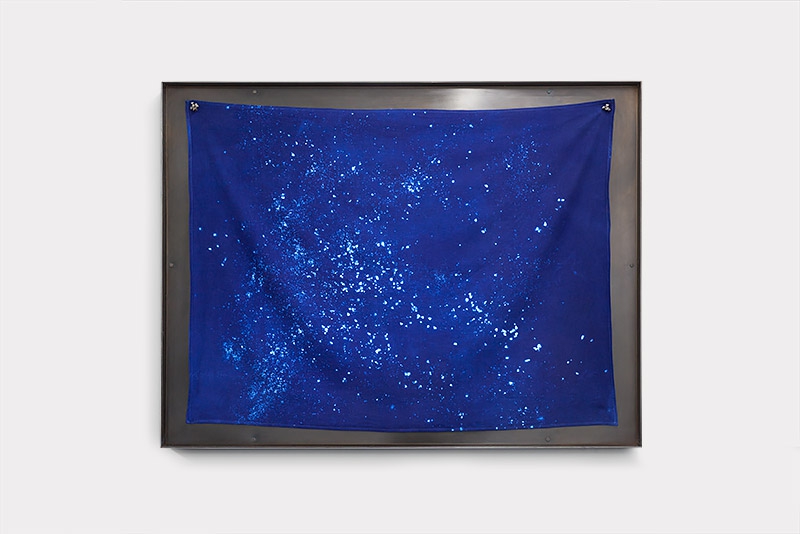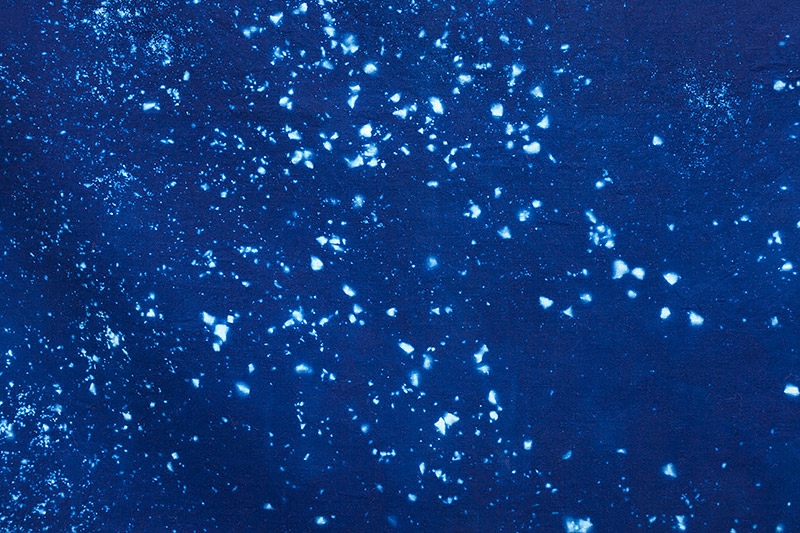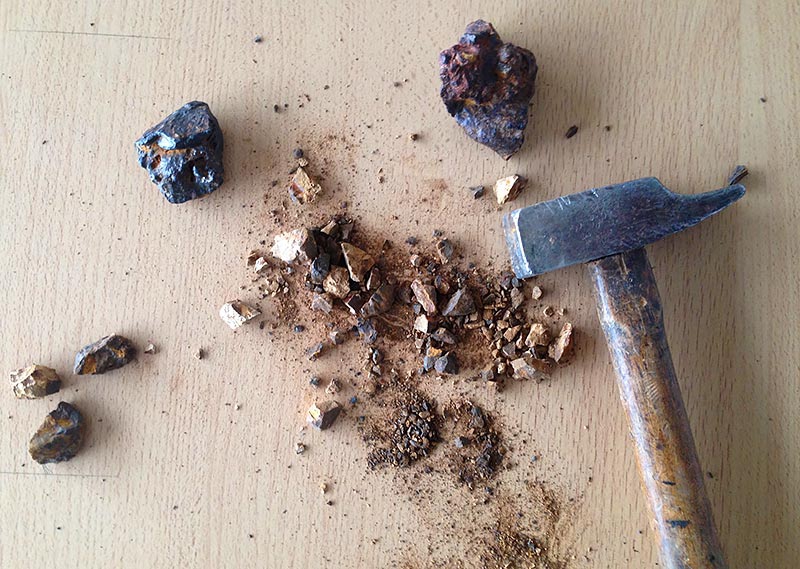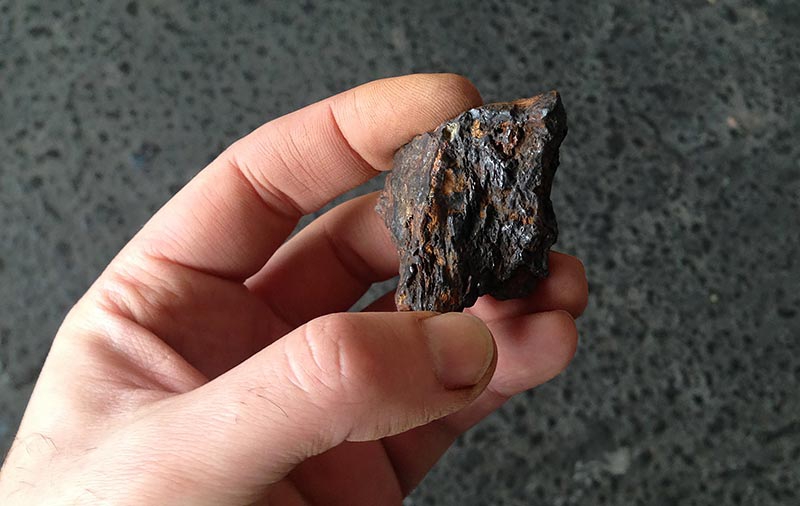There are more things in heaven and earth, Horatio,
Than are dreamt of in your philosophy.
Shakespeare, Hamlet (1.5.167-8)
-

A starry sky on fabric, created using the cyanotype technique. It produces a characteristic ‘Prussian Blue’ tint due to the presence of iron salts in the processing solution. Yet iron is a cosmic material, that did not form here on Earth: it is projected across the universe when stars explode.

The cyanotype reacts to UV rays; to obtain its blue colour, it must be exposed to sunlight. It can be used to produce photograms: an object, placed on a sheet, leaves a white mark that appears after exposure. Here, the shattered fragments of a meteorite – 93% iron – have been scattered across the fabric to figure as stars. This composition, with the exception of the fabric, is thus entirely realized with the very materials that it represents.

To complete the picture, the cyanotype was invented by an astronomer, and a notable one at that, John William Herschel. Alongside his astronomical research, he was also interested in the nascent field of photography; he created the cyanotype as a means of reproducing his notes.
 Cyanotype on cotton satin, magnetites, magnets, steel frame
Cyanotype on cotton satin, magnetites, magnets, steel frame
82 x 107 cm

À qui demande à voir l'intérieur de ta main,
montre les planètes non découvertes dans le ciel.
Paul Éluard et André Breton, Le jugement originel
-

Un ciel étoilé sur tissu, produit en cyanotype. La technique ne donne que cette couleur typique (« Bleu de Prusse »), du fait de l’emploi de sels de fer dans la composition du mélange. Or le fer est une matériau stellaire, qui ne s’est pas formé sur Terre; il est projeté dans l’univers lors des explosions d’étoiles.

Le cyanotype réagit aux UV; pour obtenir le bleu, on expose le support aux rayons du soleil. Il produit des photogrammes: un objet, posé sur la feuille, laisse une marque blanche après exposition. Ici, ce sont des morceaux concassés d’une météorite —qui contient 93% de fer— qui ont été éparpillés sur le tissu pour figurer les étoiles. Cette composition est donc entièrement réalisée (sauf le tissu) avec ce qu’elle représente…

Enfin, détail qui a sa place ici, le cyanotype a été inventé par un astronome, John William Herschel, dont la contribution à cette science a été immense. En parallèle, il s’intéressait aussi à la photographie naissante; il a mis au point la technique du cyanotype en cherchant une méthode pour reproduire ses notes.

Cyanotype sur satin de coton, magnétites, aimants, cadre acier
82 x 107 cm















